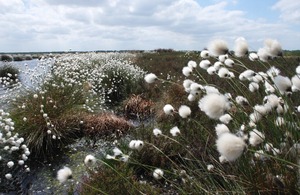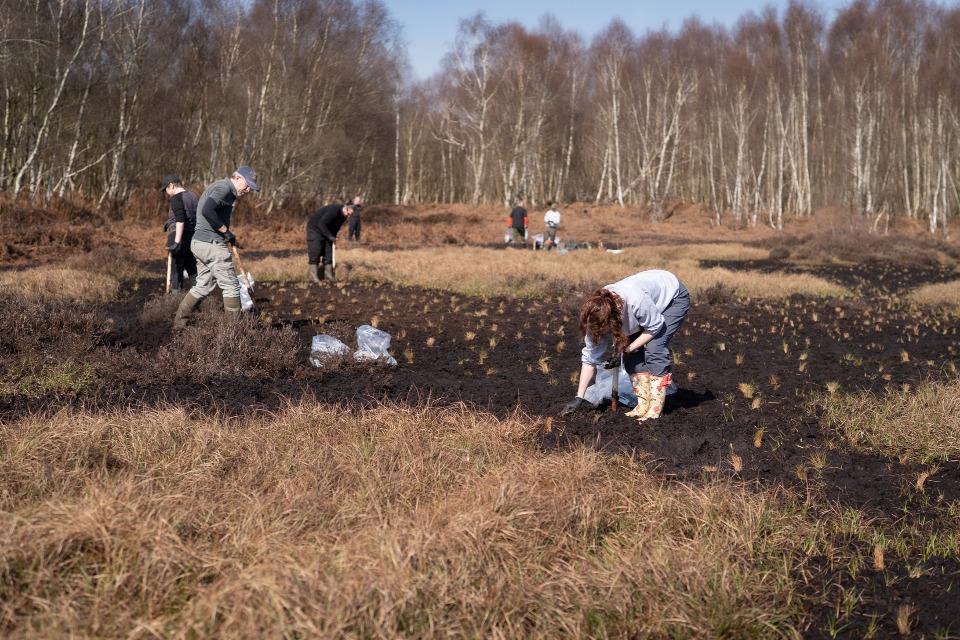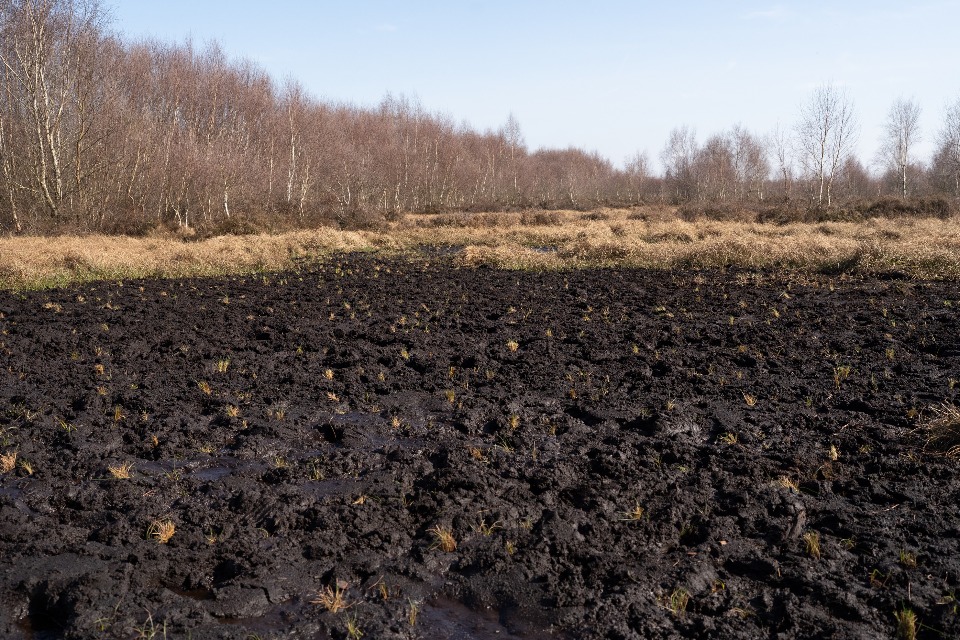Transforming Humberhead nature reserve with ‘snow of summer’
12,000 plugs of cotton grass have been planted at Humberhead National Nature Reserve (NNR) marking a key step in restoring the peatlands.

Cottongrass in fruit on the Humberhead Peatlands NNR. Copyright Peter Roworth.
Visitors to the iconic peatlands of Humberhead National Nature Reserve (NNR) may think they are seeing an early snowfall this summer following the planting of thousands of cotton grass plants.
The white, whimsical allure of common cotton grass heads are a familiar sight across Yorkshire landscape and the little plants play a big role in peatland restoration.
They act as a both an eco-warrior by fighting soil erosion and as a wildlife magnet, attracting birds and insects which boosts biodiversity.
At Humberhead NNR, cotton grass is particularly important for the large heath butterfly with their caterpillars using it as a foodplant.
Cotton grass is also considered a companion plant to another engineer of the ecosystem, sphagnum moss.
Growing sphagnum and cotton grass together stores water and prevents the decay of dead plant material, which in turn develops new peat and locks away carbon from the atmosphere.
12,000 ‘plugs’ planted
At Humberhead NNR, 12,000 cotton grass ‘plugs’ were planted by a team of Natural England staff and volunteers from Humberhead Levels Partnership.
The work was delivered as part of the LIFE Moor Space project and funded by an EU LIFE grant. The wider project aims to restore 400 hectares of degraded lowland peat bog.

Natural England staff and volunteers from the Humberhead Levels Partnership planting cotton grass at Humberhead NNR
Paul Schofield, Senior Project Manager for LIFE Moor Space with Natural England, said:
Peatlands are amongst our most carbon-rich ecosystems on Earth. Not only are they vital for fighting climate change, but they reduce flood risk and support biodiversity.
A key step in restoring the Humberhead Peatlands NNR is to ensure all bare peat is covered with peat forming vegetation. The new cotton grass, sometimes known as the snow of summer, is a major step towards achieving this and our thanks go to everyone involved.

Cotton grass plugs planted on bare peat at Humberhead NNR
The Humberhead Peatlands are made up of Thorne, Goole, and Crowle Moors, as well as Hatfield Moors. The Peatlands are a remnant of a large wetland that occupied the floodplain of the Humberhead Levels thousands of years ago.
Following significant restoration, they now represent the largest area of raised bog wilderness in lowland Britain at 2,887 hectares in size.
The site is also internationally important, both as an example of a lowland raised bog covered in pools and plant life, as well as for its breeding pairs of the mysterious and mythical nightjar.
Lowland raised bog is one of western Europe’s rarest and most threatened habitats and the Humberhead site is now protected as a Special Area of Conservation (SAC).
Natural England take care of the peatlands by carefully managing the water levels to promote the growth of bog plants and sphagnum mosses.